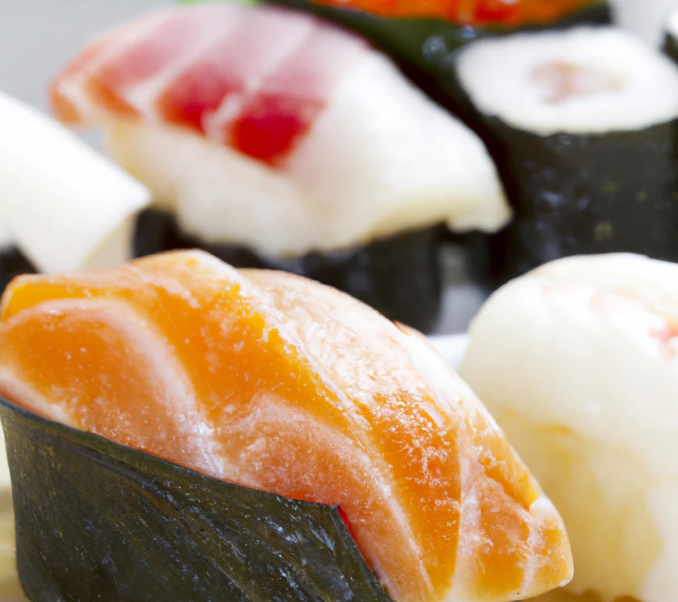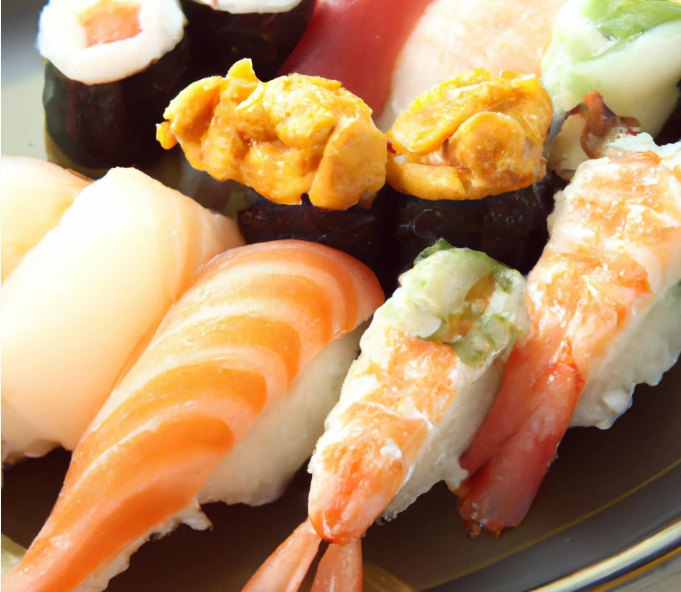Like many other ancient cuisines, Sushi’s past is shrouded in mythology and folklore. In an old Japanese wives’ story, an older woman began hiding her rice pots in osprey nests because she was afraid robbers would take them. After a while, the woman would gather her pots and discovered that the rice had started to ferment. She also noticed fish remnants from the osprey’s meal in the rice. Not only was the mixture delicious, but the rice also functioned as a means of preserving the fish, ushering in a new method of extending the shelf life of seafood.
While this is a lovely myth, the true origins of Sushi are a little more enigmatic. In a fourth-century Chinese dictionary, salted fish is inserted in cooked rice, causing it to ferment. This could be the first time the term “sushi” has appeared in paper. Several centuries ago, Southeast Asia pioneered fermented rice as a fish preservative. Lactic acid bacilli are formed when rice begins to ferment. In conjunction with the salt, the acid induces a response that suppresses bacterial growth in fish. This technique is known as pickling, and it is why the sushi restaurant is known as a tsuke-ba or pickling place.
Sushi was most likely introduced to Japan in the ninth century and quickly grew popular as Buddhism flourished. As a result of the Buddhist dietary practice of refraining from meat, many Japanese people turned to fish as a nutritional staple. The Japanese are credited with the invention of Sushi as a complete dish, eating the fermented rice alongside the preserved fish. This rice and fish combination is known as nare-zushi or aged Sushi.
The earliest known form of nare-zushi, funa-zushi, emerged around 1,000 years ago near Lake Biwa, Japan’s largest freshwater lake. The lake’s golden carp, known as funa, was caught, packed in salted rice, and compacted beneath weights to speed up fermentation. This method took at least a half-year to complete and was only available to Japan’s wealthy upper class from the ninth through fourteenth centuries.
Japan was in the midst of civil war around the turn of the 15th century. During this period, cooks discovered that adding extra weight to the rice and fish cut the fermenting time in half to about one month. They also found that the pickled fish did not need to decompose entirely to taste delicious. Mama-nare zushi, or raw nare-zushi, was the name given to this unique sushi technique.
Tokugawa Ieyasu, a Japanese military tyrant, relocated Japan’s capital from Kyoto to Edo in 1606. Edo seems to be transformed overnight. With the assistance of the increasing merchant class, the city swiftly became a center of Japanese nightlife. By the nineteenth century, Edo had grown to be one of the world’s greatest cities in terms of both land area and population. Edo’s sushi manufacturers employed a fermenting process devised in the mid-1700s, layering cooked rice seasoned with rice vinegar on top of a layer of fish. The layers were crushed in a tiny wooden box for two hours before slicing into serving pieces. This new technology significantly reduced the time required to prepare Sushi, and thanks to a Japanese entrepreneur, the entire process was about to become much faster.
Hanaya Yohei, a guy from Edo, arrived in the 1820s. Yohei is widely regarded as the father of modern nigiri sushi or, at the very least, its pioneer marketer. Yohei created the first sushi business in Edo’s Ryogoku area in 1824. Due to its situation along the banks of the Sumida River, Ryogoku translates as “the site between two countries.”
Yohei chose his spot smartly, setting up his stand near Sumida’s few bridges. He used a more recent speed fermentation method, adding rice vinegar and salt to newly cooked rice and allowing it to sit for a few minutes. He then hand-pressed the Sushi, topping a little ball of rice with a thin slice of raw fish fresh from the bay. The fish didn’t need to be preserved or fermented because it was so fresh. Sushi is prepared in minutes rather than hours or days. Yohei’s fast-food Sushi was well received; the constant flow of people crossing the Sumida River provided him with a consistent supply of clients. Nigiri became the new sushi preparation standard.
By September 1923, hundreds of sushi carts, or yatai, dotted around Edo, now known as Tokyo. When the Great Kanto Earthquake hit Tokyo, land prices plummeted dramatically. This catastrophe allowed sushi merchants to purchase rooms and relocate their carts indoors. Sushi-ya (restaurants catering to the sushi sector) sprang up throughout Japan’s capital city. Sushi was almost exclusively served indoors by the 1950s.
The demand for luxury sushi in Japan soared in the 1970s, thanks to innovations in refrigeration, the capacity to ship fresh fish over large distances, and a robust post-war economy. Sushi establishments sprouted up across the country, and an expanding network of suppliers and distributors allowed Sushi to spread globally.
Los Angeles was America’s first city to embrace Sushi successfully. Noritoshi Kanai and his Jewish business
partner, Harry Wolff, launched Kawafuku Restaurant in Little Tokyo in 1966. Kawafuku was the 1st restaurant in the United States to serve traditional nigiri sushi to restaurant-goers. Japanese people in business, who recommended it to their American counterparts, loved the Sushi place.
Osho, the first sushi restaurant outside of Little Tokyo, was established in Hollywood in 1970 and catered to celebrities. This provided Sushi with the final push it needed to succeed in the United States. Soon after, additional sushi restaurants sprouted in New York and Chicago, assisting the dishes spread across the country.
Sushi is constantly changing. Modern sushi chefs have pioneered novel ingredients, preparation methods, and presentation techniques. Traditional nigiri sushi is still widely available in the United States, but sliced rolls wrapped in seaweed or soy paper have grown in popularity in recent years. Creative additions such as cream cheese, spicy mayonnaise, and deep-fried rolls indicate a distinct Western influence that sushi connoisseurs love and despise. Modern vegetable-style sushi rolls are suitable for vegetarians as well.


